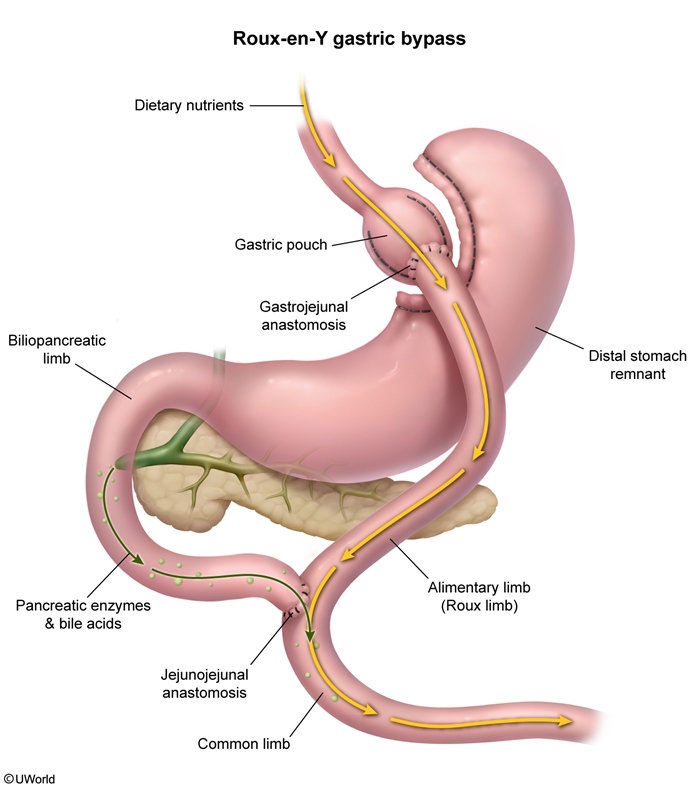Dumping Syndrome
Article Sections
Introduction
Dumping syndrome is a common complication of bariatric and gastric surgeries (eg, gastric bypass) that alter normal gastrointestinal anatomy and motility. These changes result in the rapid emptying of hypertonic gastric contents into the small intestine, which provokes a combination of postprandial gastrointestinal symptoms (eg, nausea, diarrhea, abdominal cramping) and vasomotor symptoms (eg, palpitations, diaphoresis).
Pathophysiology and clinical presentation
Normally, food moves through the stomach slowly, ensuring proper digestion. The pyloric sphincter serves as a barrier and allows only small, properly digested food particles to move to the small intestine. Surgical removal or bypass of the pyloric sphincter allows hyperosmolar, partially digested contents to enter the small intestine too rapidly, triggering a cascade of abnormal physiologic responses.
Dumping syndrome is categorized as either early or late, based on the timing and etiology of postprandial symptoms.
Continue Learning with UWorld
Get the full Dumping Syndrome article plus rich visuals, real-world cases, and in-depth insights from medical experts, all available through the UWorld Medical Library.
Figures
